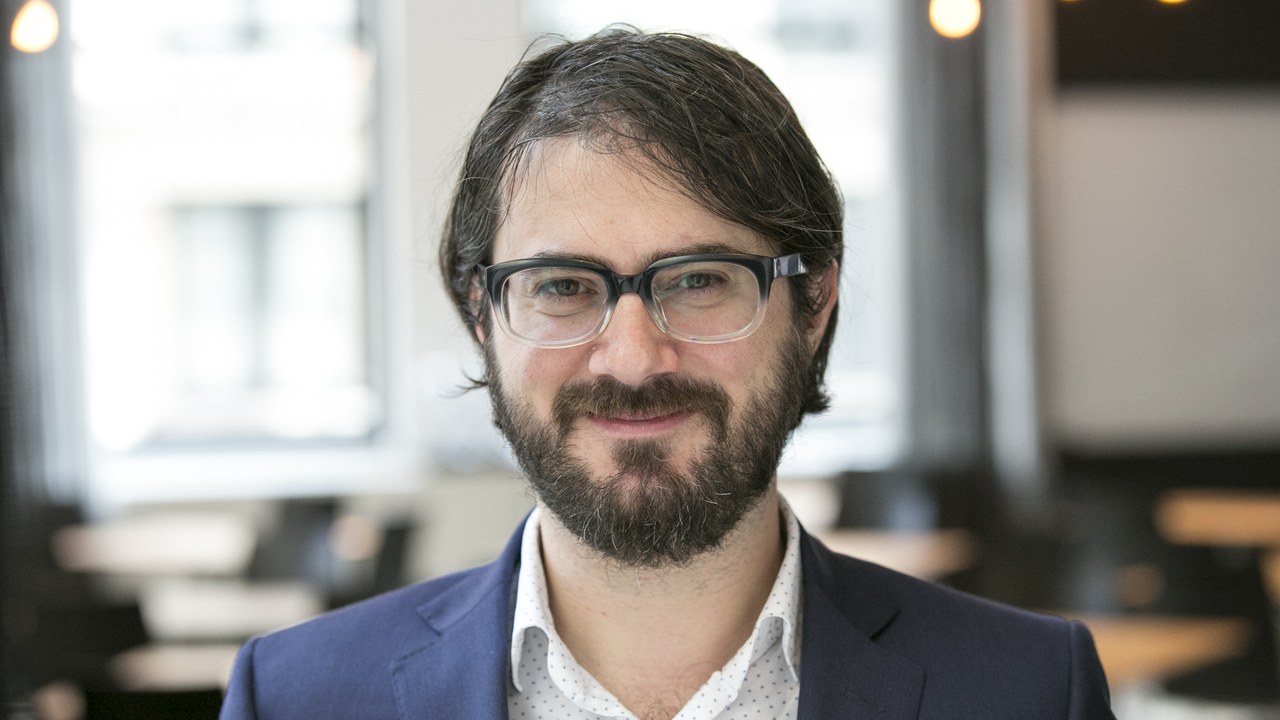B. Andrei Bernevig receives the 2023 EPS Europhysics Prize
The Visiting Ikerbasque Professor at Donostia International Physics Center (DIPC) has been awarded with the 2023 EPS Europhysics Prize for his contributions in the field of novel topological quantum materials

The Visiting Ikerbasque Professor at Donostia International Physics Center (DIPC) and Professor of Physics at Princeton University in the United States B. Andrei Bernevig has received the EPS Europhysics Prize for seminal contributions to the classification, prediction, and discovery of novel topological quantum materials. It is the first time that one of our researchers has received this prestigious award.
The EPS Europhysics Prize is one Europe’s most prestigious prizes in the field of condensed matter physics. The Prize was awarded for the first time in 1975 (this is the 40th edition). It is given in recognition of a prominent and well-identifiable discovery, breakthrough, or contribution to condensed matter physics, by one or more individuals, contribution that, in the opinion of the selection committee, represents scientific excellence.
According to B. Andrei Bernevig, “the research recognized by this prize, would not have been possible without a truly international collaboration of institutions, in which scientists from Princeton, DIPC, University of Basque Country (UPV/EHU), École Normale Supérieure and the Max Planck Institute collaborated closely for more than a decade. The research involved the development of analytical, pen and paper, methods to classify and predict topology in quantum electron wavefunctions, their implementation in algorithms for all 1651 symmetry groups in nature, and the prediction of the topological numbers of around 100000 materials. These are now available at https://www.topologicalquantumchemistry.com/.”
“Both University of Basque Country’s Luis Elcoro, Mois Arroyo, and DIPC’s Maia Vergniory played an essential role in this theoretical research program, along with Princeton’s Barry Bradlyn, Jennifer Cano, Zhijun Wang, École Normale Supérieure’s Nicolas Regnault, and Max Planck’s Yuanfeng Xu,” adds Bernevig. Futhermore, “our collaboration is growing every year, with work in new fields - such as Kagome metals, charge density waves and electron-phonon coupling - with DIPC and University of Basque Country (UPV/EHU) experimental (Santiago Blanco Canosa) and theoretical groups (Ion Errea and Fernando de Juan). The early commitment of Princeton, DIPC, and other institutions researchers to this collaboration made such a huge program possible. It really shows what can be achieved with well-supported international collaborations. On the applied side, Max Plank’s Claudia Felser, the other recipient of the Europhysics prize is also actively collaborating with DIPC, growing and providing samples for the experimental work of DIPC’s Santiago Blanco Canosa on Kagome metals.”
One of the hottest topics in condensed matter physics today is topology, and in particular materials whose properties are controlled by their topology, an area in which universal design rules can be derived by group theoretical and mathematical considerations. Bernevig is an international leader in this field and is responsible for the development of general design rules, that have led to the prediction of thousands of new topological compounds, and the experimental realization of many of these. The path forward for many current applications, from quantum computing to catalysis, thermoelectrics, superconductors, and sensing, requires the discovery of novel quantum materials. New classes of quantum materials have been found in insulators and semimetals whose properties can be indexed by the mathematical concept of nontrivial topology.
After winning gold and silver in the International Physics Olympiad as a teenager, Bernevig graduated from Stanford University in 2001 where he worked under Bob Laughlin with bachelor's in physics and master's in mathematics. He received his PhD from Stanford University under Shoucheng Zhang, and continued as a postdoctoral fellow at the Center for Theoretical Physics at Princeton University, where he is now a professor. His work on topological states of matters starts with the initial prediction of Quantum Spin Hall States in HgTe ; his theoretical work on classifying quantum materials based on topological principles of the electron wavefunction was achieved through the decade-long combined collaboration of a Princeton team of post-doctoral researchers and students, with an École Normale Supérieure professor, and an essential team of senior and junior researchers at the University of the Basque Country (UPV/EHU) and crucially atDonostia International Physics Center, where he is a Visiting Ikerbasque Professor.
